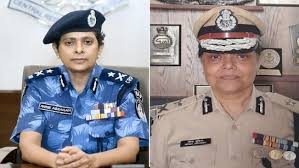Understanding the Role of CRPF in India’s Security Framework

Introduction
The Central Reserve Police Force (CRPF) plays a crucial role in maintaining internal security in India. Established in 1939, it has evolved into one of the largest paramilitary forces in the world, with over 300,000 personnel. The importance of the CRPF has surged in recent years due to increasing challenges related to terrorism, communal violence, and insurgency in various parts of the country. As India faces growing security concerns, the CRPF’s contributions are pivotal in fostering peace and maintaining law and order.
CRPF’s Structure and Function
The CRPF operates under the Ministry of Home Affairs and is tasked with a wide array of functions, including riot control, counter-terrorism operations, and crucial assistance during natural disasters. The force is structured into several battalions, each serving different regions and needs. The diverse capabilities of CRPF, including specialized commands such as the Rapid Action Force (RAF) for riot control and CoBRA (Commando Battalion for Resolute Action) for anti-Naxal operations, showcase its versatility.
Recent Developments and Operations
In recent months, CRPF has been actively engaged in several major operations to tackle terrorism, especially in Jammu and Kashmir. In a joint initiative that included local law enforcement, the CRPF successfully neutralized several militant threats, contributing to a decrease in violence in affected areas. Furthermore, their role during the COVID-19 pandemic in managing crowd control and assisting with relief efforts has been widely acknowledged.
Significance in Current Times
As India navigates complex domestic and international challenges, the CRPF’s significance is more pronounced. Their proactive measures, ranging from securing voting processes in sensitive regions during elections to participating in joint operations with military forces, represent their commitment to national security. The recent emphasis on modernizing the force with technology and enhanced training reflects a forward-looking approach to counter emerging threats.
Conclusion
The CRPF stands as a cornerstone of India’s internal security apparatus. With a mandate that extends beyond conventional policing, it engages in various operations to counter threats to peace and stability. Looking ahead, the need for such a force is likely to grow, necessitating continued support and enhancement in capabilities to ensure the safety of Indian citizens. As the nation faces evolving security challenges, understanding the CRPF’s role will be essential for informed discussions about our safety and defense strategies.








